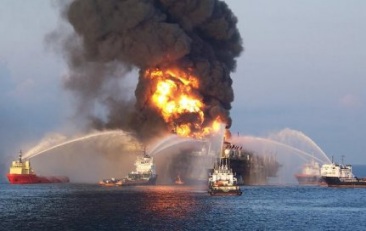Introduction
It is early July as this is written and 72
days since the Deepwater Horizon blowout occurred.
There is no shortage of news about the catastrophe
that is ongoing in the Gulf of Mexico. But there is a
shortage of usable information about the science and
technology involved in deep water oil drilling. One
purpose of this website is to provide that
information.
There are some obvious questions. How could such a
thing happen in the first place? Why is it so hard to
stop an oil leak? Is this going to happen again? This
website will try to answer these questions.
Current Situation
The government estimate of the amount of oil flowing into the Gulf of Mexico is
35 to 60 thousand barrels per day--a figure that has
been revised upward several times. Only a small fraction of
it has been captured or burned. If the higher
figure is accepted, over 3 million barrels have
escaped. That would make the Deepwater Horizon spill
nearly equal to the Ixtoc
Gulf of Mexico spill of 1979. That was the
world's largest ocean spill. If the lower figure is
accepted, the Deepwater Horizon spill is 10 times
bigger than the
Exxon Valdez spill.
The Deepwater
Horizon blowout could continue until late August or,
some say, even December.
The New York Times has a
spill tracker
which is updated daily.
The same data are presented dynamically here.
A Few Thoughts
Is there a limit to the amount of environmental
degradation acceptable in the quest for energy? What
is the role of government in regulating energy
businesses? Who should pay for cleaning up the
Deepwater Horizon mess? Who should pay for the
destruction of the seafood industry and the tourist industry?
The magnitude of the catastrophe will
likely change the general attitude toward these
questions. That makes the Deepwater Horizon blowout a pivotal event. It
is well worth understanding it.
